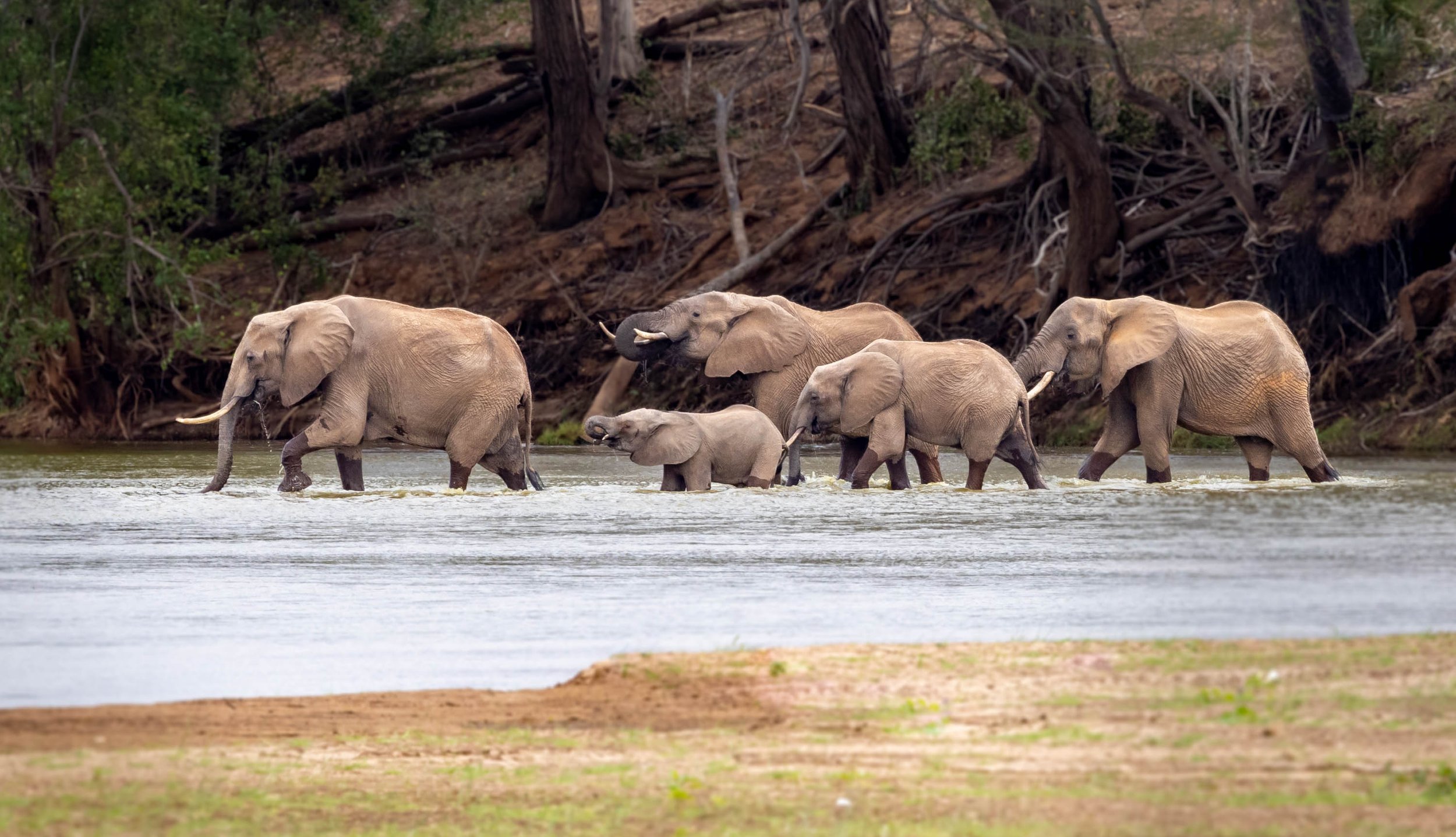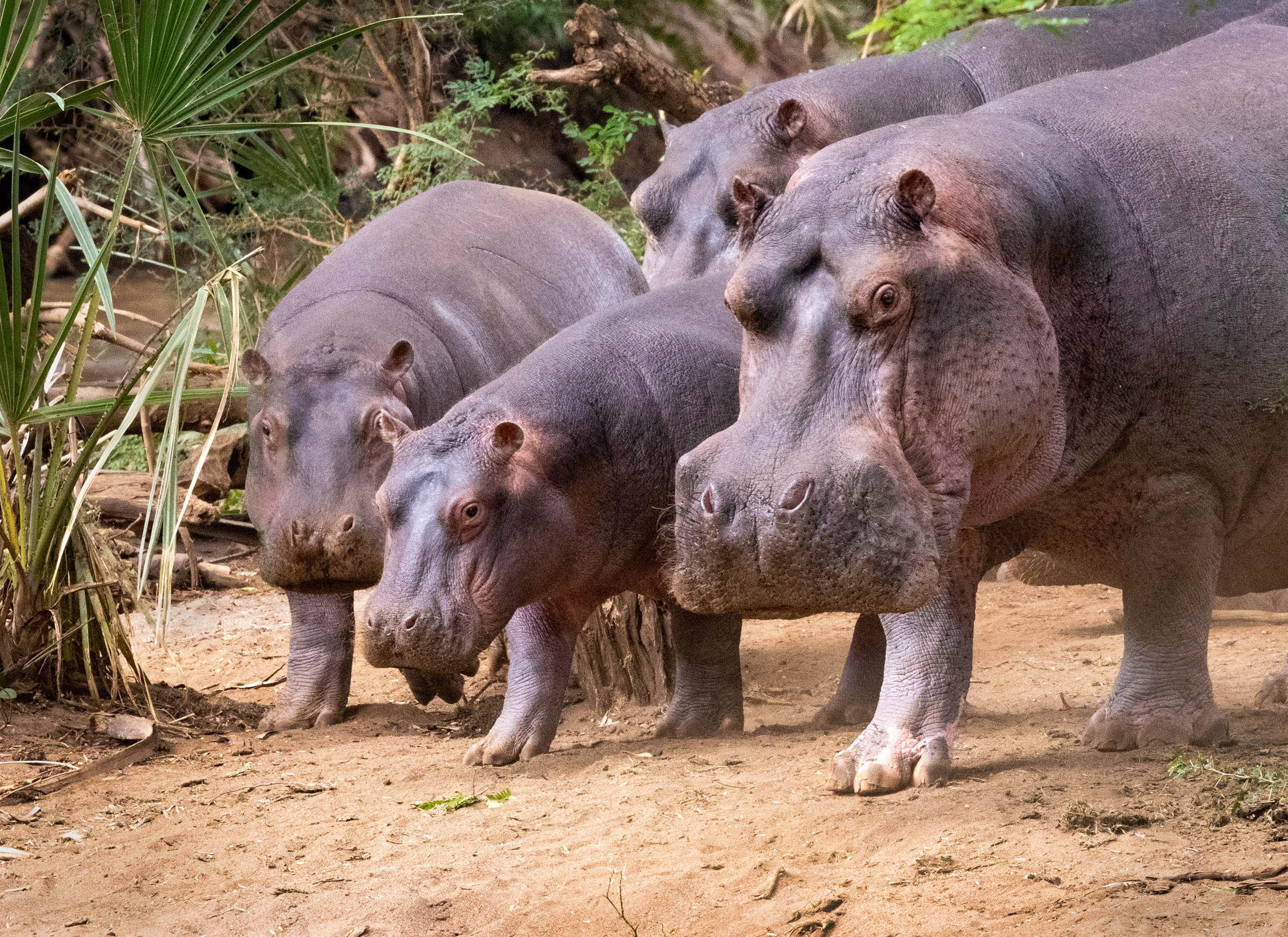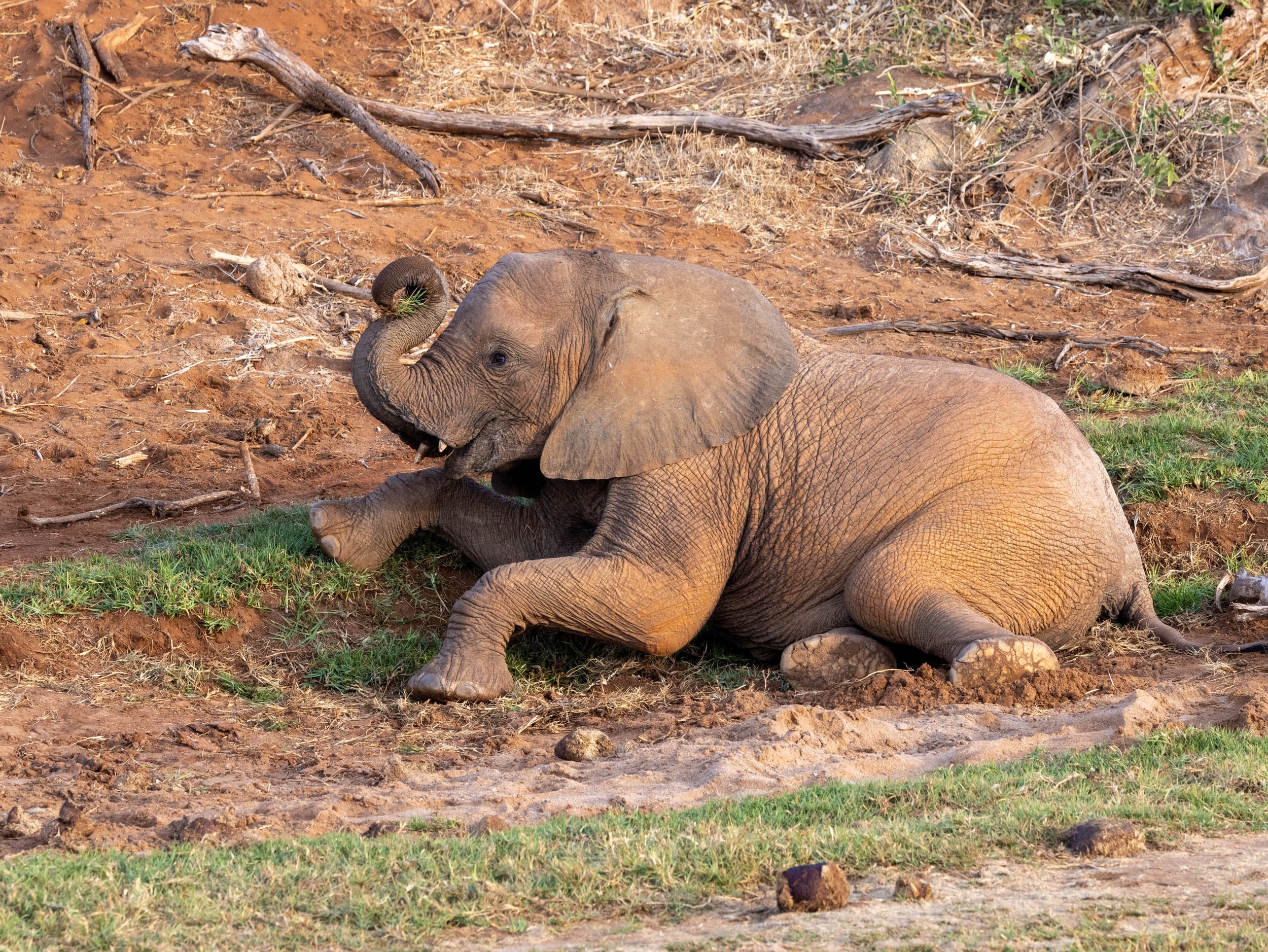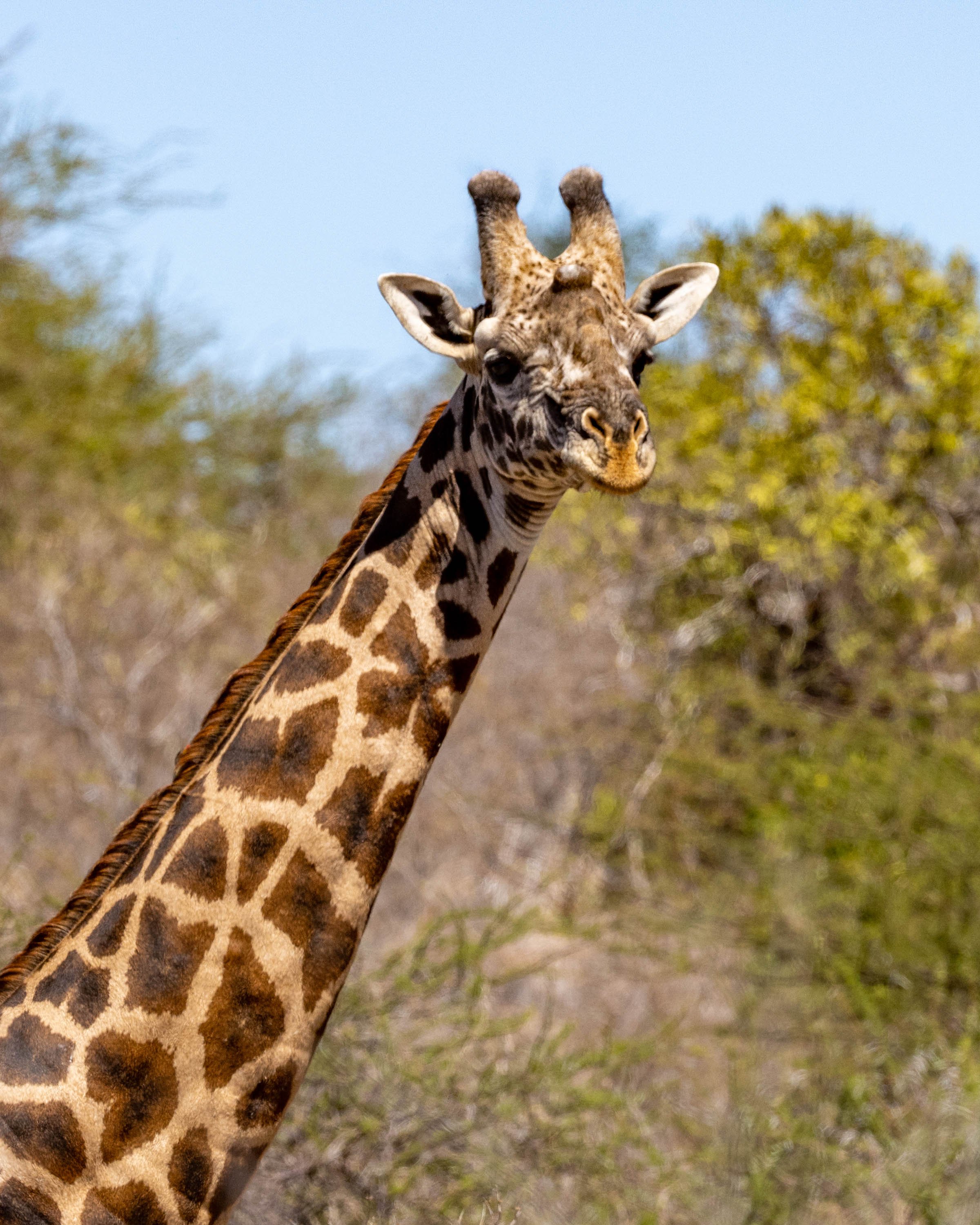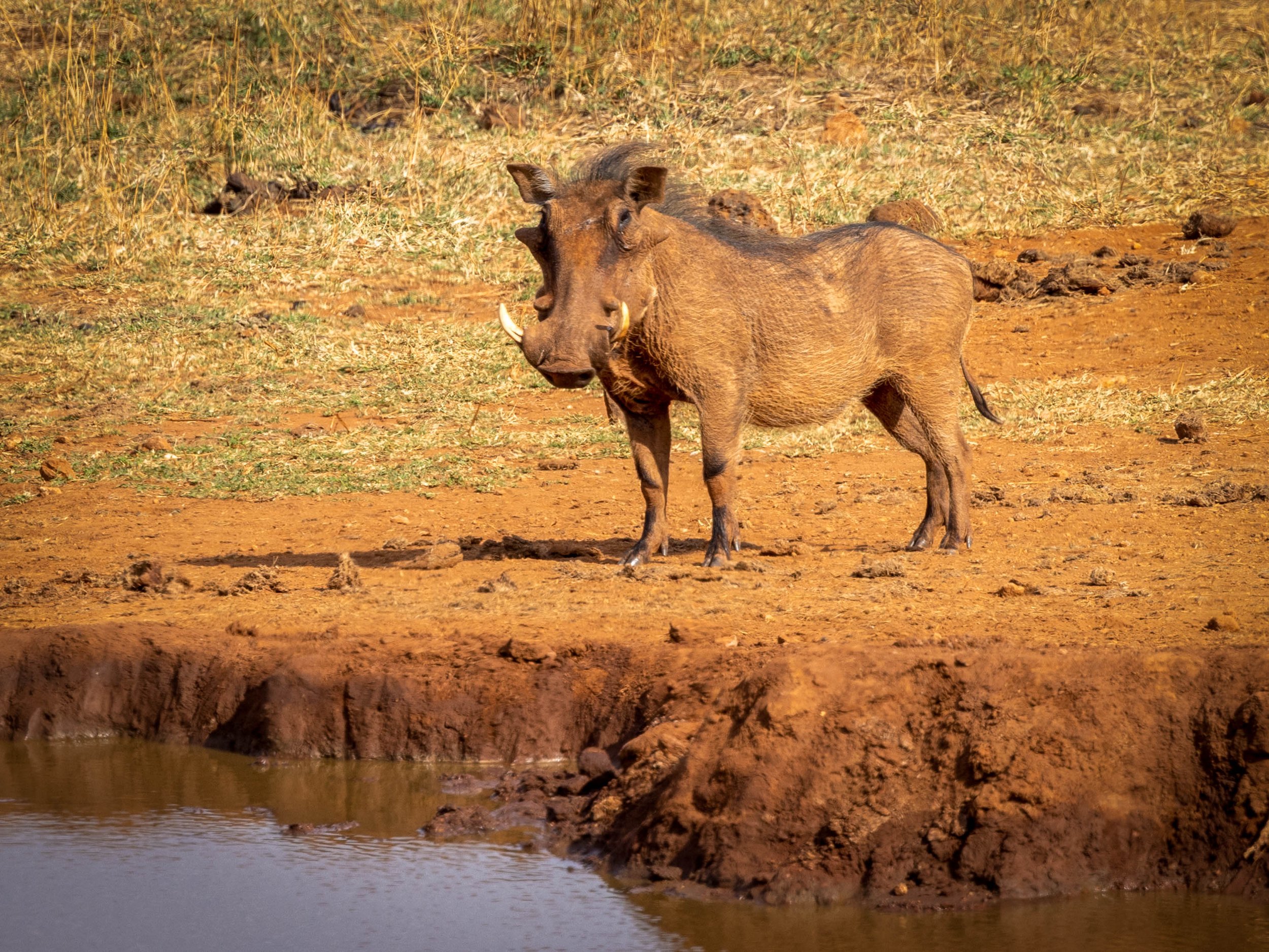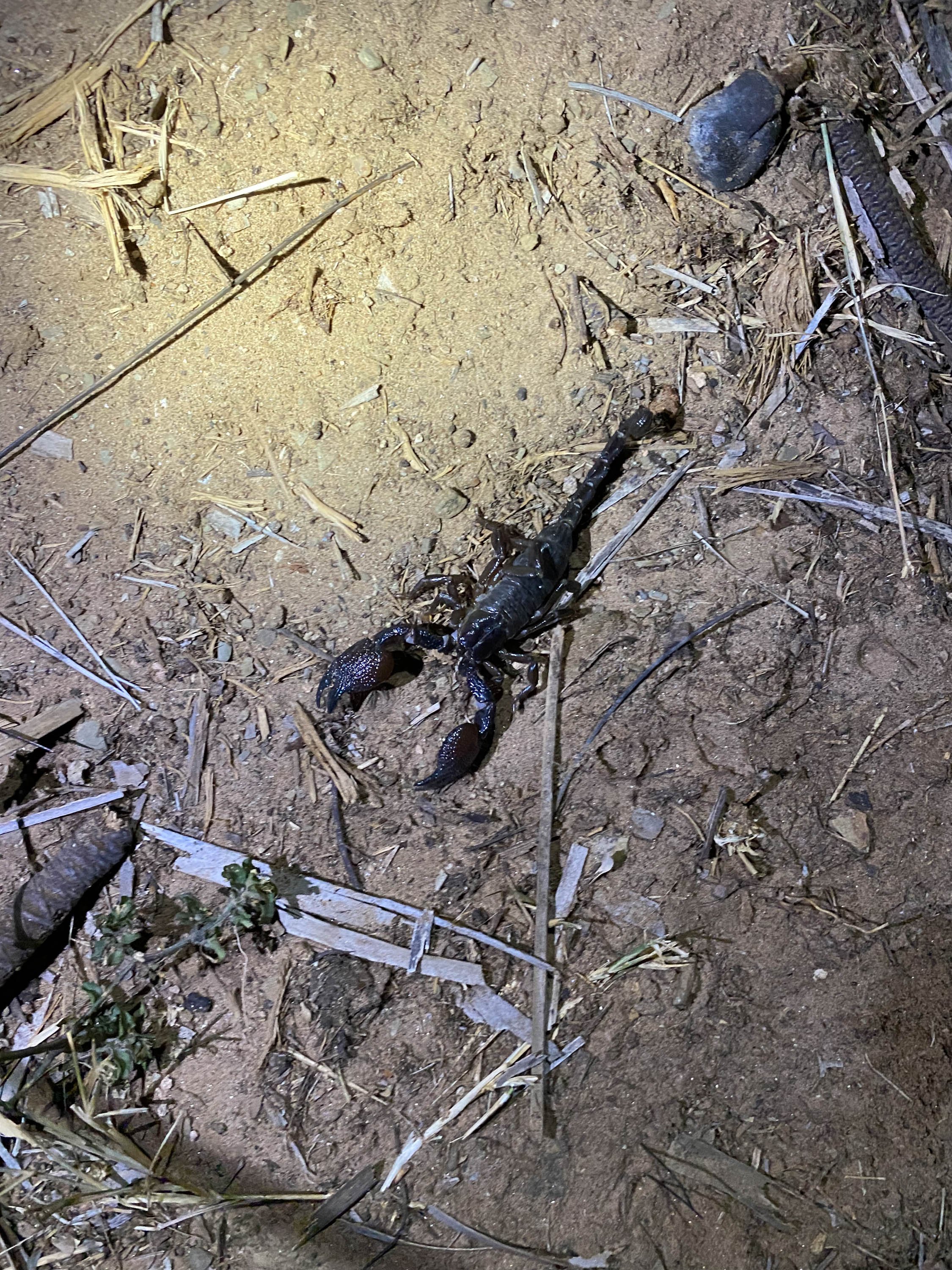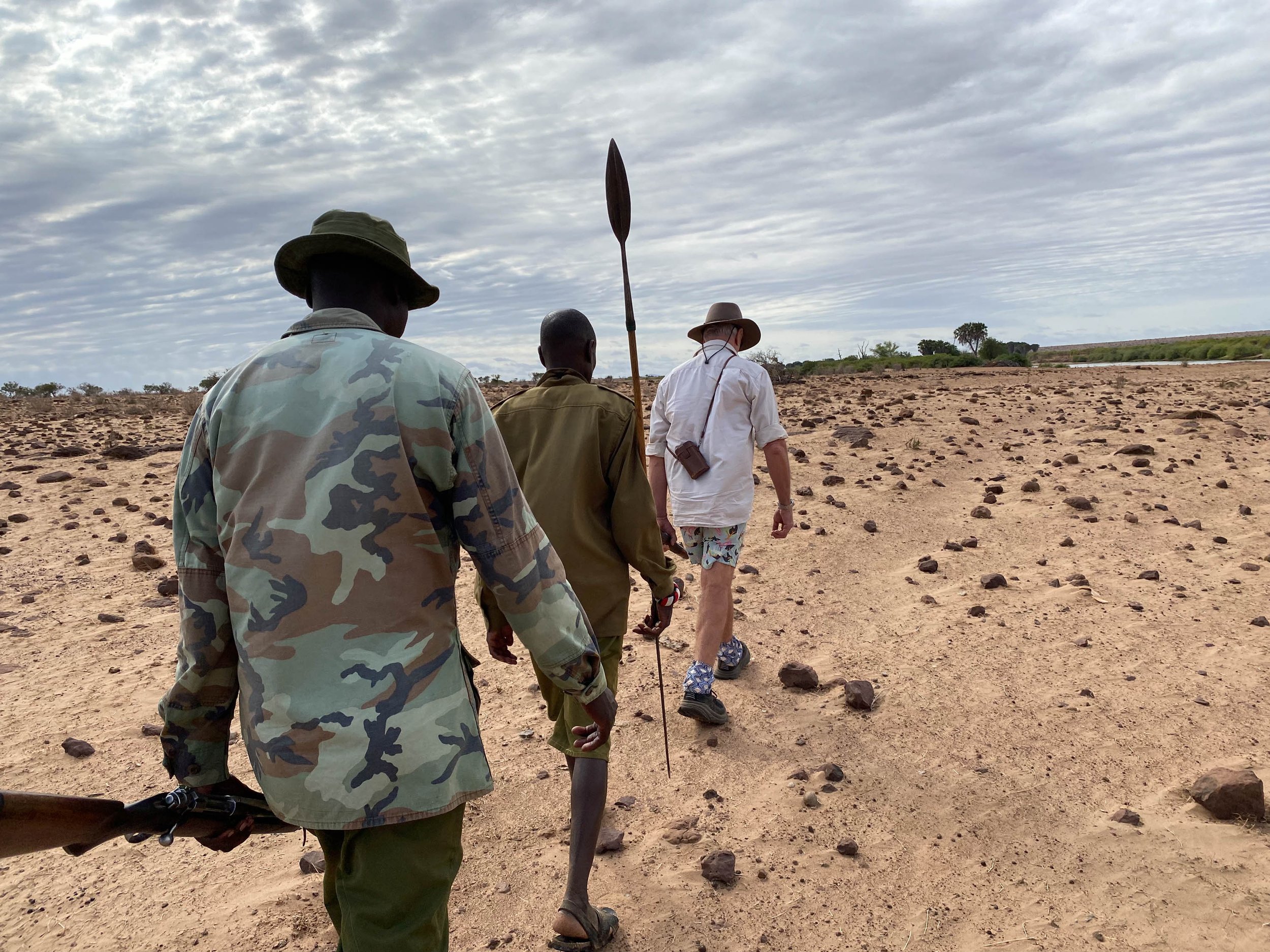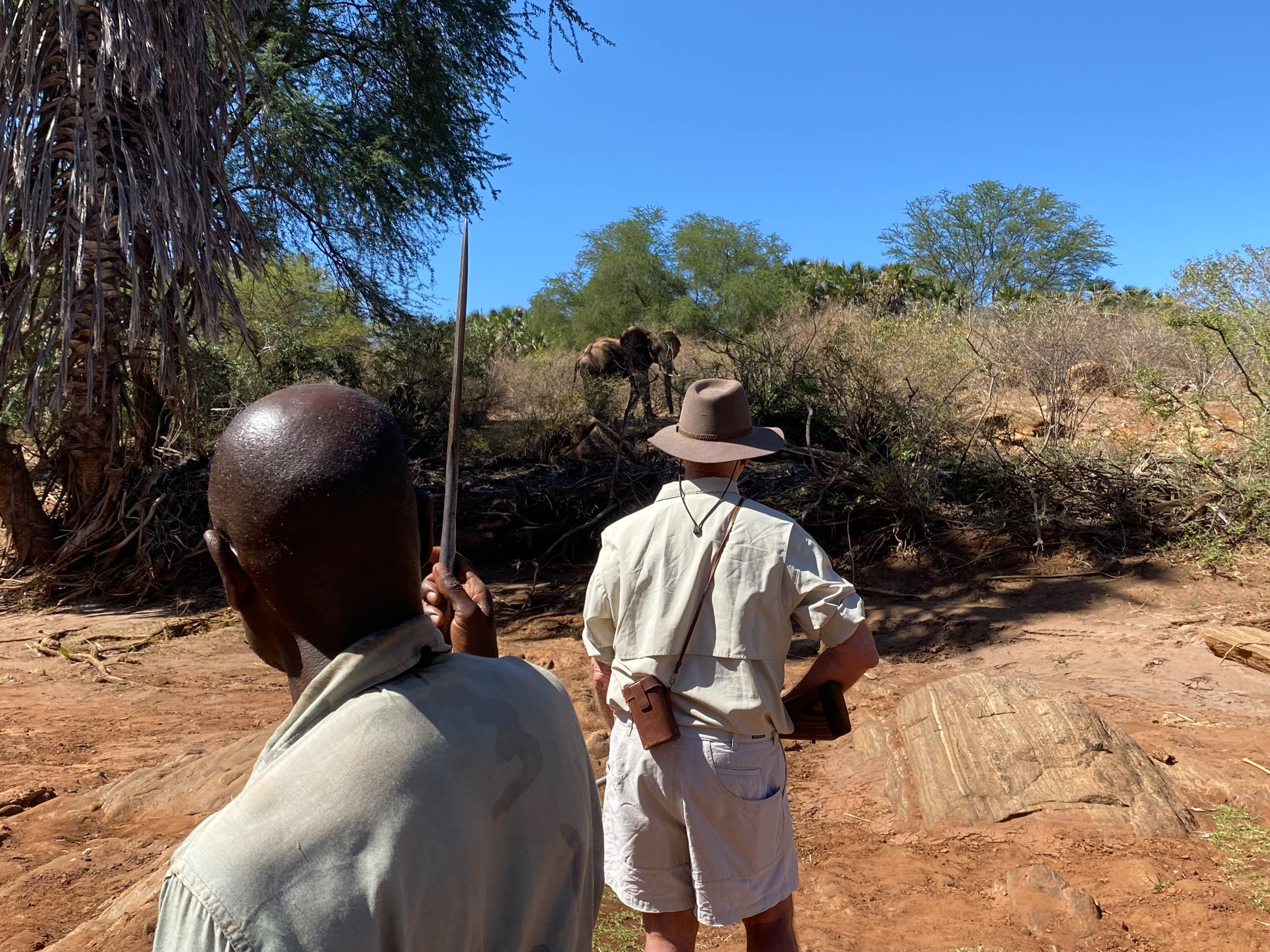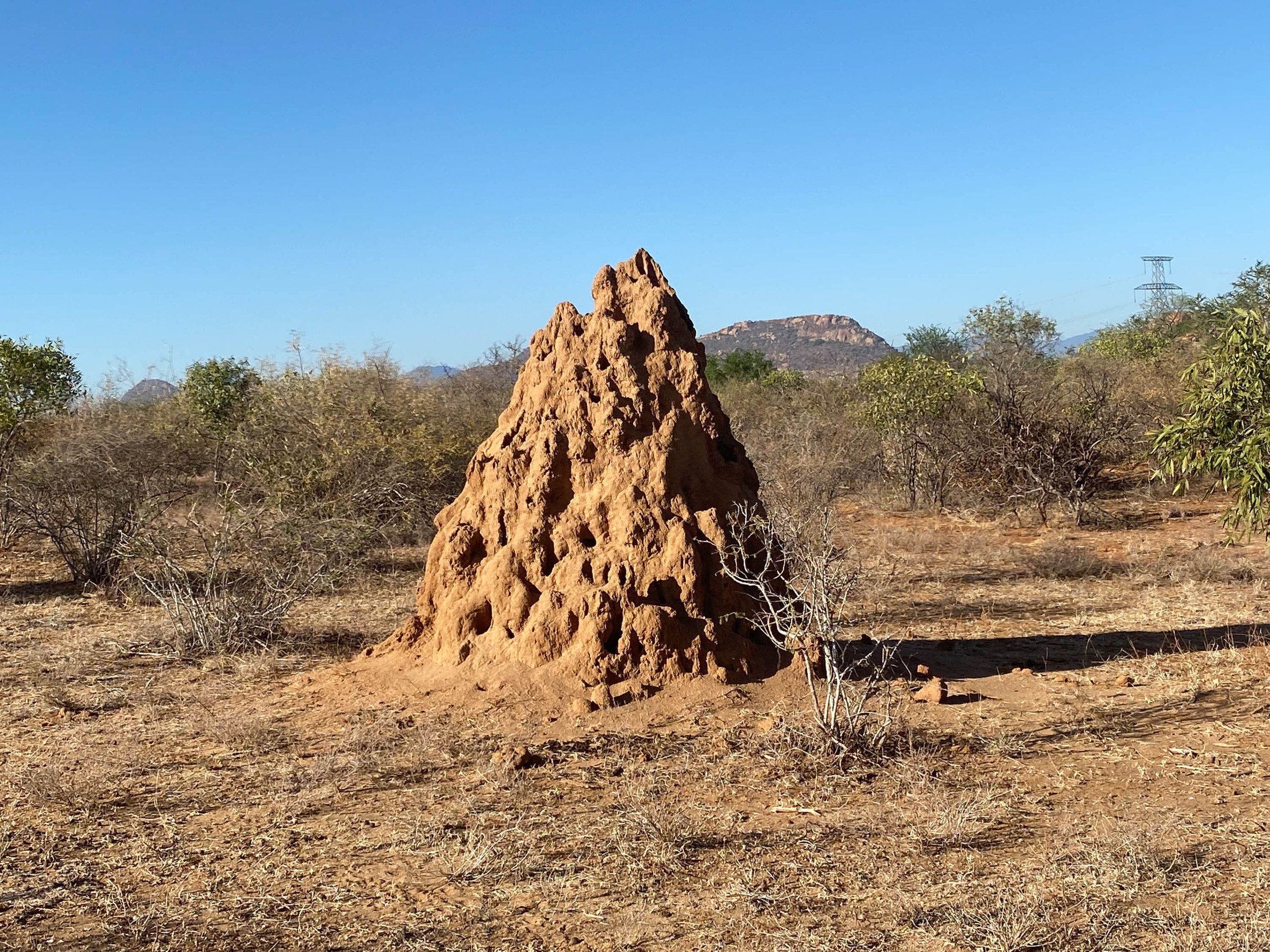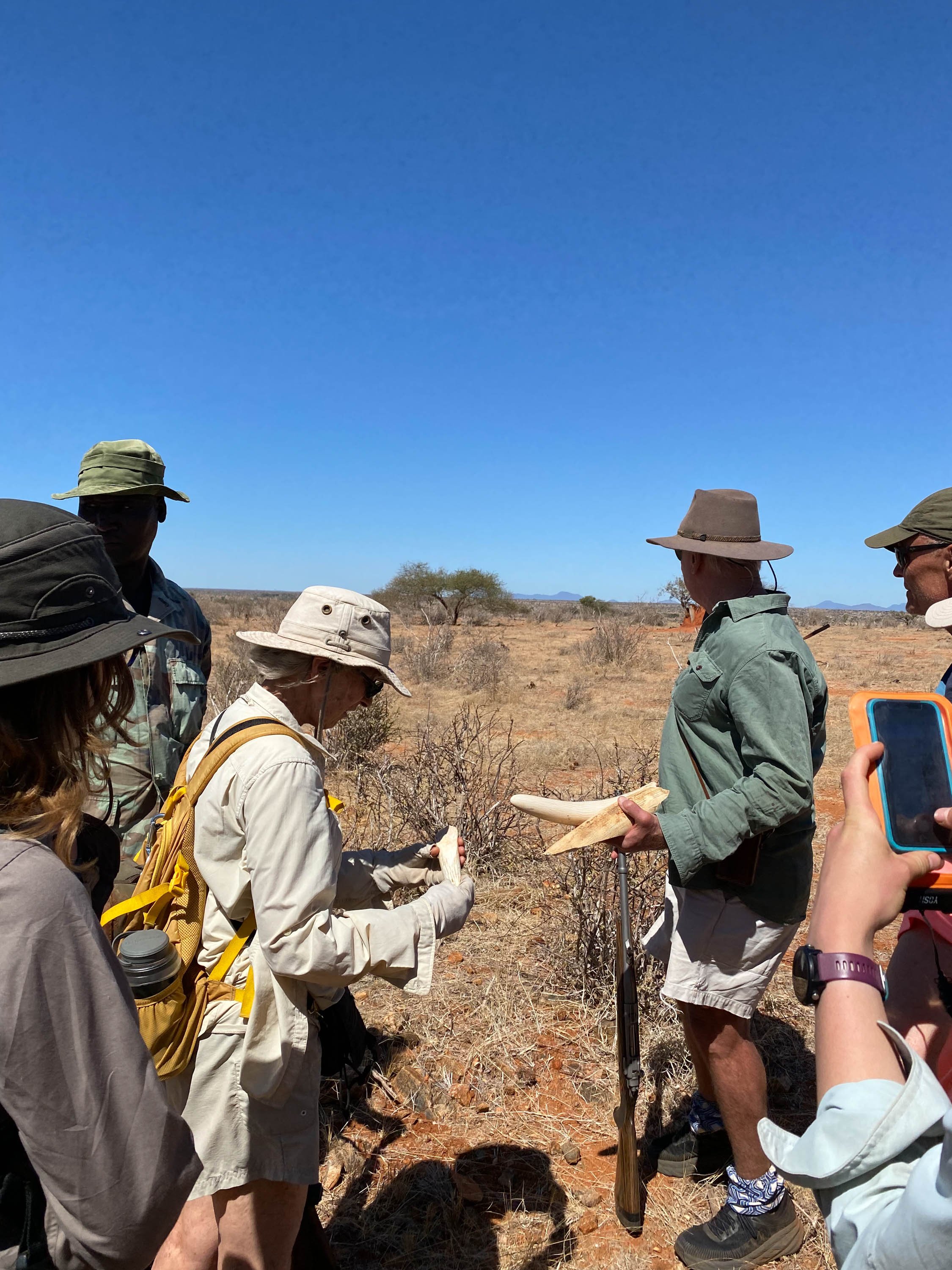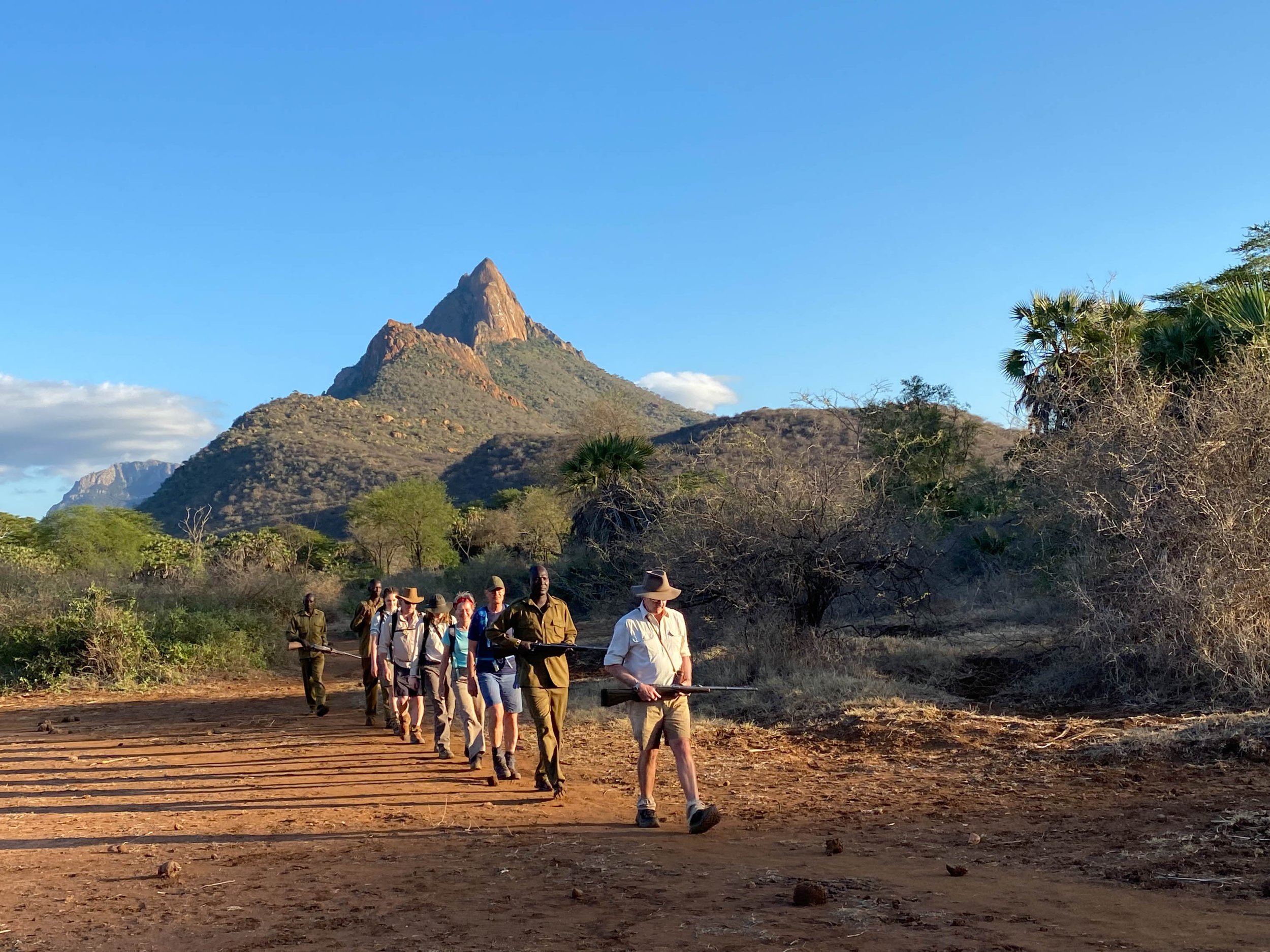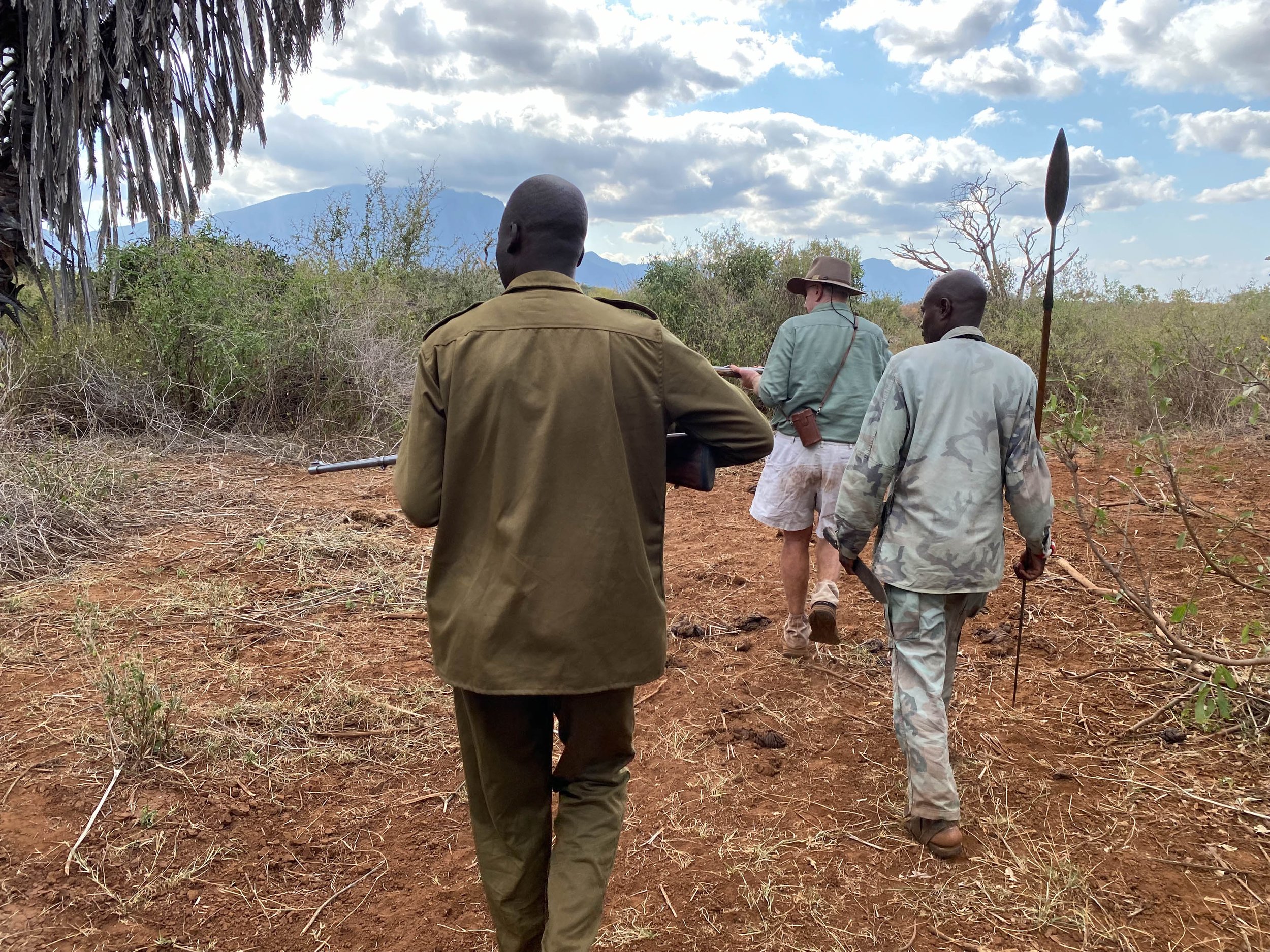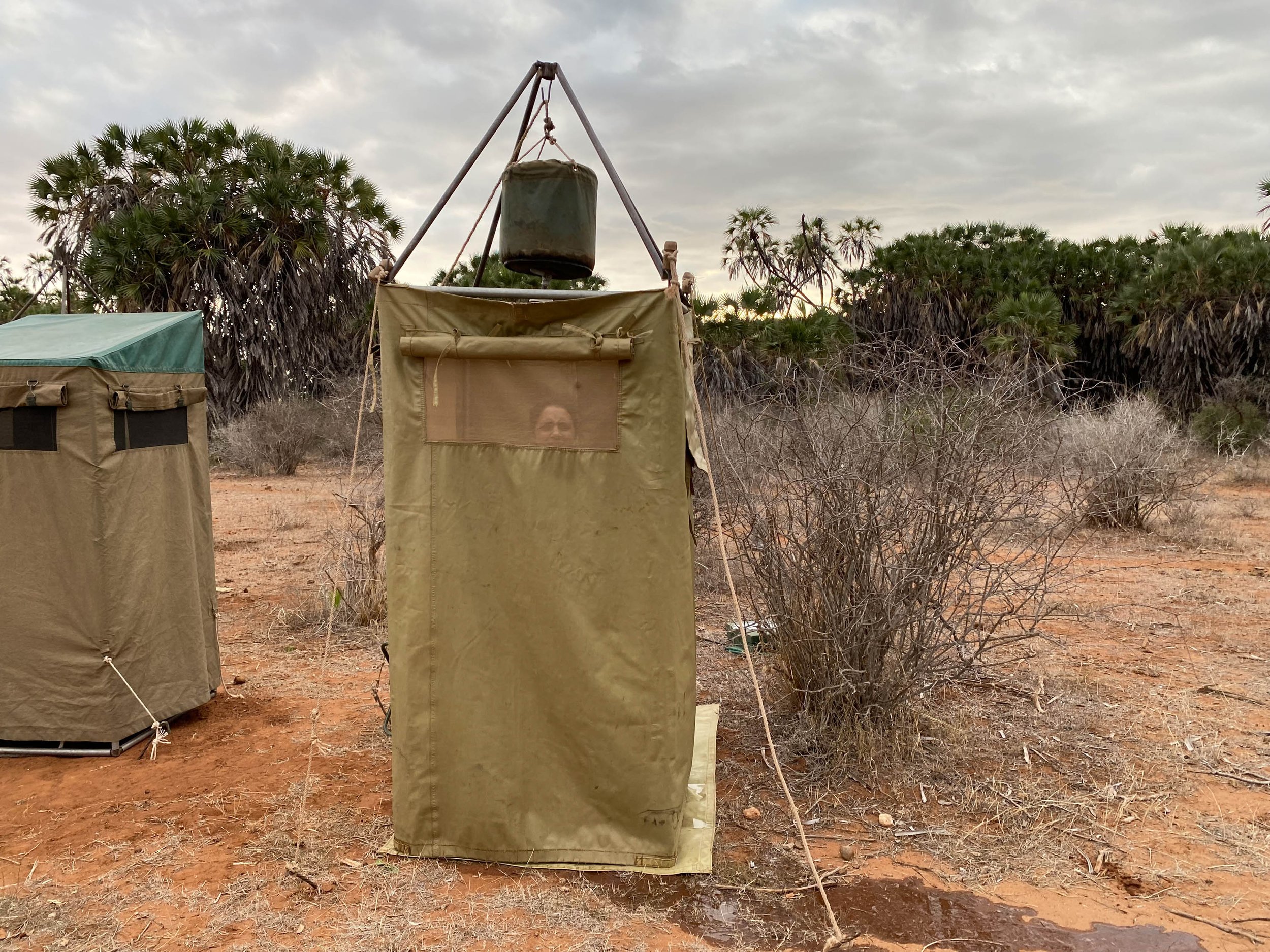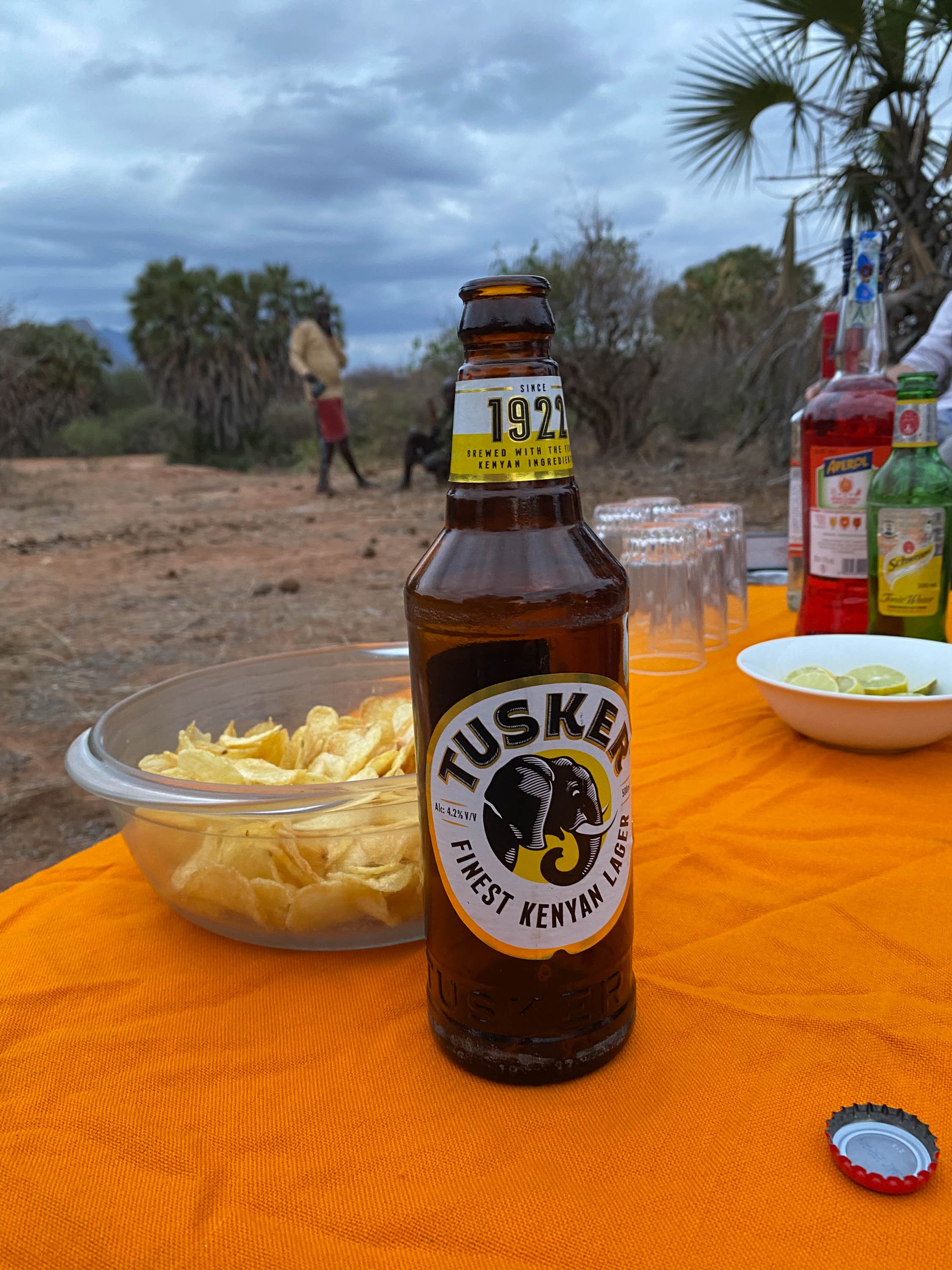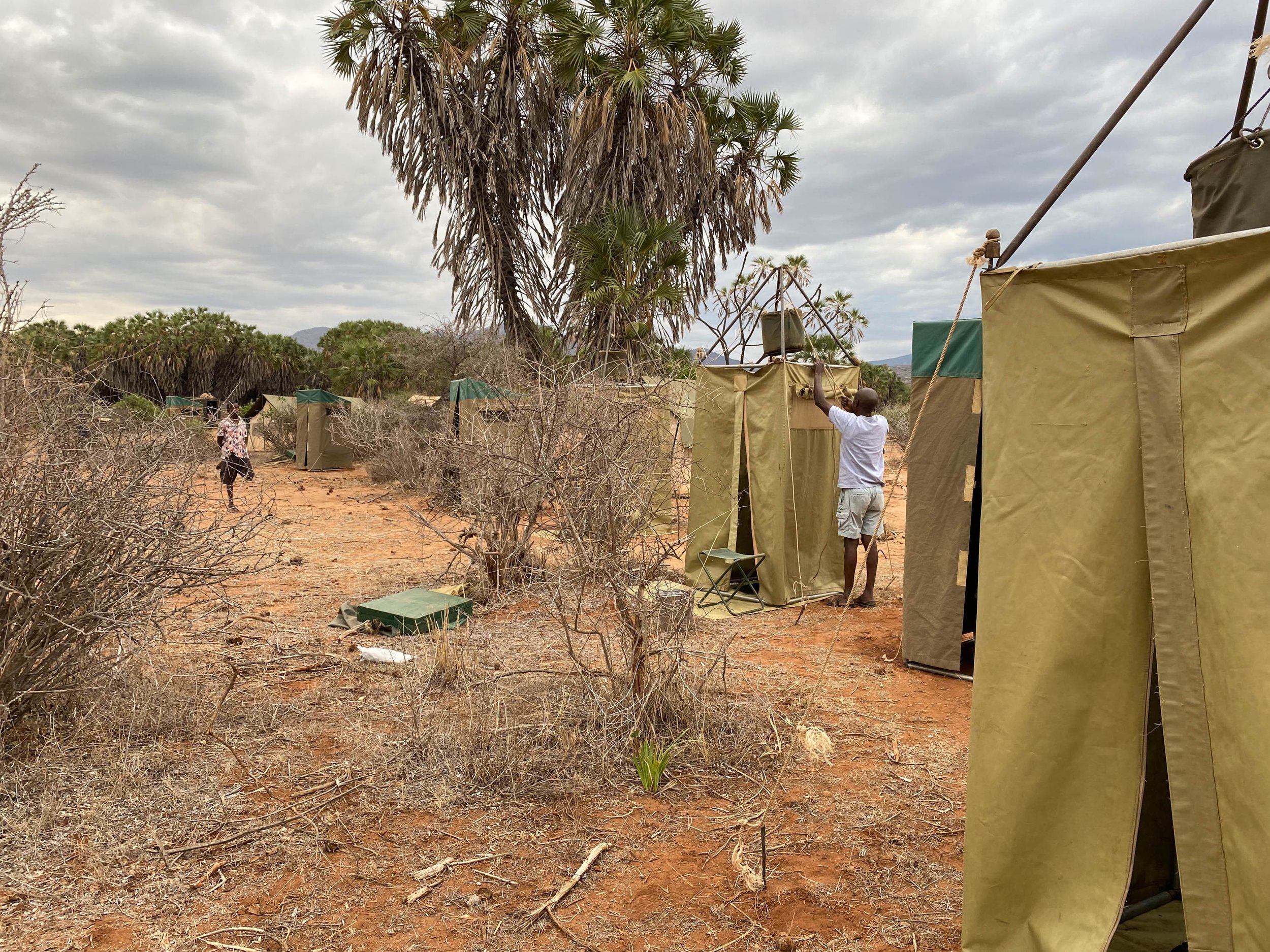Hiking Safari across Tsavo National Park, Kenya
Led by a professional guide and protected by Samburu tribesmen carrying spears and rifles, we walked 100 miles through Kenya, from the foothills of Kilimanjaro to the arid plains near the Indian Ocean. During our ten-day trek, we followed game paths that crisscrossed the landscape, allowing us to get close to the animals and immerse ourselves in the African wilderness. I carried both a professional digital SLR camera with me as well as my always handy iPhone camera. Between the two cameras, I had a lot of fun capturing images of this amazing country.
From majestic and matriarchal elephants shepherding their families to and from the river amid a years-long drought to stoic lions, grumpy hippos, and ever-present crocodiles, we saw many animals as we experienced the wild Kenyan landscape. At night, we camped under the stars of the Southern Hemisphere and listened to the sounds of the wildlife - hippos grunting, lions calling, and baboons and birds stirring in the early morning hours. One night, a lion walked through our camp; his low-toned vocalizations were so loud they shook my tent and left me awake for hours, listening to my breathing and feeling thankful I’d visited the bathroom tent before he arrived.
We spent the first days of our trip trekking through lush vegetation near the river, avoiding hippos, and walking past thickets of brush over which curious giraffes poked their heads as they watched us pass. Inquisitive baboons carried their babies on their backs as they climbed the trees, while vervet monkeys ventured close, ready to cause mischief if the opportunity arose. Later, as the habitat became more arid and open, we saw zebras stained orange from rolling in the red clay, ostriches running along the plains, and herds of antelope in the distance. The Samburu tribesmen were so in tune with the land they could point out animals over a mile away (with binoculars) and spot dangers before we knew we were in trouble. During one morning’s walk, they wordlessly motioned us behind them as they pointed their rifles and spears into the thick brush. They ushered us around a sleeping hippo hidden behind a thicket just a short distance from the path. Since hippos have bad eyesight and don’t like to be disturbed, we were thankful it remained oblivious to our presence.
These are some of the many photographs I took as we walked through Kenya. I hope you enjoy them.
Well, hello there! This giraffe was photographed at the Giraffe Center in Nairobi.
The drought in East Tsavo has been going on for several years and is taking its toll on the animals. These elephants were seen running from their grazing grounds to the river because they were thirsty. Even though there was vegetation near the river, it was not nutritious enough for them to eat.
This African warrior has seen a lot in his years. I love how he's framed by the vegetation and the light is raking across his face. He has stories to tell.
These giraffes kept an eye on us as we passed by. I loved watching them move across the plain. A giraffe's gait is unusual because they move both legs forward on one side of the body and then move the legs forward on the other side. They swayed and undulated as they walked and were so graceful and mesmerizing.
African sunset viewed during a Land Rover game drive.
These trees remind me of Roald Dahl's The Witches, a favorite childhood book. I love the colors of the sunset behind them.
A family of elephants made it to the river for an evening drink.
This lion was keeping an eye on us from across a river. I was thankful I had a long lens on my camera.
Each of these hippos is 6000 pounds of grumpy. Taken with a 500mm lens, I was able to get close without disturbing them.
These zebras kept an eye on us from a distant ridge. I love how the warm colors of the clay contrast with the cool blue sky and the orange-tinted zebras.
Great white pelicans flying in formation over the plains of East Tsavo.
A single jackal, alert and alone in East Tsavo.
A male bull elephant crossing a river. Most males leave their mothers and family groups when they are about 10-15 years old.
Huge flocks of red-billed quelea flew over the Tsavo River each dawn and dusk near the end of our trek.
A yellow-billed stork hunted for breakfast in the shallows one morning.
A beautiful ostrich shimmering in the heat.
A lioness resting with her pride after a hunt
Look at those teeth!
These lionesses are resting in the shade of a tree.
Beautiful lioness.
This lion rested by himself away from his pride. Male lions in Tsavo often have minimal manes, likely because of all the thorn bushes in the area; their thin manes are less likely to get tangled in the vegetation.
Tracks of the lion who visited us one night.
Sunset over the Yatta Plateau, the world's longest lava flow.
Mother and baby elephant drinking peacefully in the setting sun.
After helping her baby get clean water (by siphoning off the mud in the puddle she dug with her feet) and drinking alongside her for several minutes, this mother decided it was time for the baby to move along. She encouraged the little one with a bit of a push.
Sleepy three-year-old elephant resting while Mom drinks nearby
A leopard descending a rocky slope. One of our guides spotted the leopard watching us from a distance; he appeared as a white rock on the ridge to the naked eye. We could make out his features with high-powered binoculars, but he was too far away for my camera's 500mm telephoto lens to make out many details. I focused on him anyway and took this photograph even though I couldn't clearly see him; later, I cropped the image on my computer and now see the details in his beautiful spotted coat.
Two hippos resting in the Tsavo River. They spend most of their time mostly submerged in the water to avoid burning their skin.
This elephant was silhouetted on the ridge above camp one morning. On the right of the image is a large termite mound.
A family of elephants walks toward a watering hole.
An elephant family walking near a watering hole while a zebra watches.
This giraffe kept an eye on us as we passed by.
An elephant family drinking at a water hole.
A caravan of zebras approaches a watering hole
Nursing zebra foal with her mother.
Family of zebras at a water hole
Mother and young zebra near a watering hole
A warthog observes the watering hole and looks out for danger.
Cape buffalo drinking at the water hole with an oxpecker bird perched on his head.
A large scorpion seen at night under the light of my headlamp. It was at least 6" long.
We took a few evening game drives in Range Rovers to get a different view of the landscape. A special treat was poking our heads out of the sun roof while the guide pointed out animals in the distance.
Our guide, Ekatan, was an amazing wildlife spotter.
To be able to get close to the animals, we had to walk quietly in a straight line, with our guides in the front and back of the group. We rotated our position in line every 10', with the leader stepping aside and falling in behind the last walker.
Our guide, Iain, and two Samburu tribesmen, Tioko and Washee, led us each day. Following them were the eight guests and two more Samburans, Eketan, and another man.
One day, an elephant wandered into camp while her family stood nearby.
Our elephant visitor in camp. She caused no trouble, but we kept an eye on her in case she decided to challenge us.
Evening moon over camp.
Evening stars over the campsite.
The Tsavo River widened as our trek progressed. On one of the last days, our guides took a long look at the river, to make sure it was free of hippos, before we forded it to get to our camp on the other side.
Two giraffes poke their heads above the brush to watch us pass.
Watching a bull elephant walk along the river.
The Mombassa Highway, which bisects Kenya, had many zebra, baboons, and other animals standing along the side of the road, apparently waiting for an opportunity to cross the road safely.
A termite mound.
In East Tsavo, we came across the remains of animals who had died in the drought and found tusks of elephants. The ivory trade is still ongoing and is terrible as it rewards poachers for killing elephants. Our guide gathered the tusks and threw them into the river so that no one would profit from the ivory.
A bull elephant enjoying having the river to himself.
Iain, Tioko, and Washee lead our group across the arid plains of East Tsavo. The Samburus hiked in open sandals while we all wore more substantial shoes and boots to protect our toes from the thorns.
We climbed a rock outcropping one day to see the view from above. Our guides checked for animals and made sure we had good footing as we climbed.
Afternoon shadows in Tsavo.
Walking through Tsavo National Park
Walking through Kenya
A hippo basking in the Galana River
One day, a herd of Cape Buffalo were coming towards us on the same path we were on. Our guide ushered us behind a tree and we waited in a silent stand-off. Finally our guide made some noises and hand movements and the buffalo turned and ran off into the brush.
Walking through Tsavo behind our guides.
Our guides always carried their rifles in ready position when we entered dense brush near rivers. That's where you'll often find hippos, especially in the morning and evening.
Our guides are keeping us safe from a nearby hippo. They ushered us into a tight group, away from the hippo, and put themselves in between us and the the animal.
Our guides carried spears and rifles to protect us from animals.
Our guides had rifles at the ready as we entered a thicket where hippos might be wandering.
Walking throughthe African bush
We enter thickets with caution to avoid animal encounters.
Iain, our guide, showing us what elephant dung looks like (it's large!)
Our mess tent. Almost time for dinner.
Our mess tent, where we had breakfast and dinner.
Our sleeping tents - very cozy and comfortable!
Our shower tent. Note the bucket of water hanging above the tent. When you're ready for water, you pull on a lever. You have to ration it, since there's only 5 gallons, but that is more than enough to get clean.
Evening view of my tent.
There were 'sun-downers' every night, a British word for cocktail hour. I loved the label on this African beer. A tusker is an elephant with tusks so long they reach the ground. They are usually 40-50 years old and their tusks sometimes exceed 100 pounds.
Setting up the shower tents.
A lovely morning walk in West T
A comfy tent for two.
Feeding the baby elephants at the Sedrick Wildlife Trust, an elephant orphanage.
When we flew from Nairobi into Tsavo, there were wildebeests on the runway. They ran away from the airplane and ran the length of the runway as we taxied to a stop. It is unclear why they didn't just run off the edge of the runway into the brush; fortunately, no animals were hurt.








